If your Monstera is wilting, yellowing, and drooping, it is likely overwatered. Monsteras are native to tropical rainforests and therefore do not like to be over-watered. Over-watering can lead to root rot, which can be fatal to your plant. Read on to learn the signs of overwatering and how to fix it.
Signs of Overwatered Monstera
If you think your Monstera is overwatered, check for these signs:
1. Waterlogged soil – If you can’t seem to get the soil to drain properly, it’s likely overwatered.
Yellowing leaves – One of the first signs of overwatering is when the leaves start to turn yellow. 2.
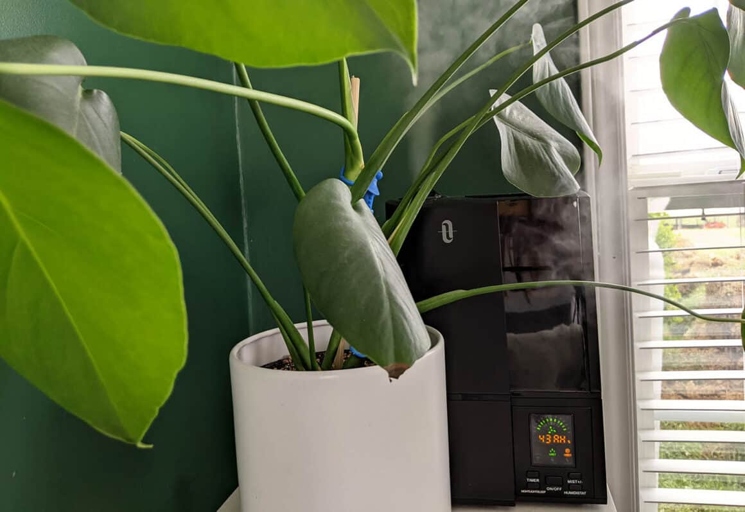
3. Brown leaves – If the leaves are brown and mushy, it’s a sure sign of overwatering.
4. Stem rot – This is when the stem of the plant starts to rot, usually starting at the base.
Overwatering is a serious problem that can kill your plant if not corrected. If you see any of these signs, it’s important to take action immediately.
To fix an overwatered Monstera, start by allowing the soil to dry out completely. Then, water only when the soil is dry to the touch. Be sure to empty any water that collects in the saucer under the pot.
If the leaves are already yellow or brown, there’s not much you can do to save them. However, you can cut them off at the base to allow the plant to focus its energy on new growth.
Just be sure to not overwater it again in the future! With a little care, you can bring your Monstera back to health.
Brown Spots on Leaves
If the soil is still dry, you may need to water the plant more frequently. If the soil is moist, it’s a good idea to let the plant dry out for a few days before watering it again. If the soil is dry, water the plant and then check the soil again in a few days to see if it’s moist. If you notice brown spots on the leaves of your Monstera, it’s a sign that the plant is being overwatered. The first step is to check the soil to see if it’s moist or dry.
Root Rot
Root rot is one of the most common problems with Monstera plants. It is caused by overwatering, which leads to the roots being unable to get the oxygen they need. This can kill the plant.
There are a few signs that your Monstera plant has root rot. If you see these signs, it’s important to take action immediately. The stem will start to soften and the plant will become limp. The leaves will start to yellow and drop off.

Once the roots have been removed, the plant will need to be repotted in fresh, dry soil. Allow the soil to dry out completely before watering again. You can do this by gently pulling them out of the soil. The first step is to stop watering the plant. The next step is to remove the affected roots.
By following these steps, you can save your Monstera plant from root rot.
Mold Growing on Soil
While mold is often associated with damp, dark, and humid environments, it can also grow in dry and sunny conditions. Mold can be found in a variety of colors, including white, black, green, and brown. Mold is a type of fungi that can grow on many different surfaces, including soil.
When soil is constantly wet, it creates an ideal environment for mold to grow. Mold often grows on soil that is overwatered or that has poor drainage. Mold can also grow on soil that is high in organic matter, such as compost.
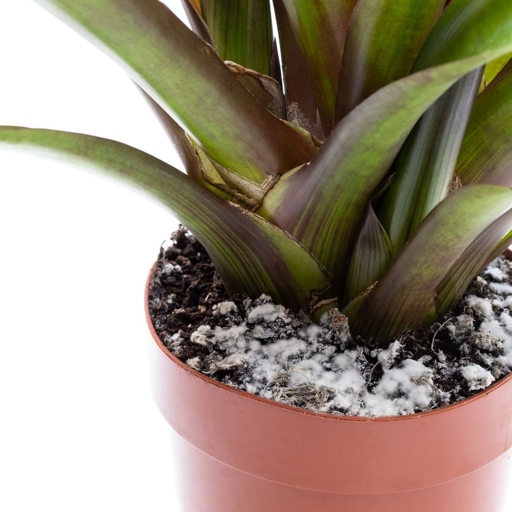
To prevent mold from growing on soil, it is important to water only when necessary and to make sure that the soil has good drainage. If mold is already present, it can be removed by mixing equal parts water and bleach and spraying the mixture on the affected area.
Yellowing of Leaves
Overwatered plants are a common issue for indoor gardeners, but it’s easy to fix with a little know-how. If you notice your Monstera’s leaves are yellowing, it’s likely due to overwatering.
If you see any of these signs, it’s time to take action. To start, it’s important to understand the signs of overwatering. In addition to yellowing leaves, you may also notice wilting, browning, or leaf drop.
The first step is to ease up on the watering. You may also need to repot the plant in fresh, dry soil. Allow the soil to dry out completely between waterings, and be sure to empty any drainage tray to prevent the roots from sitting in water.
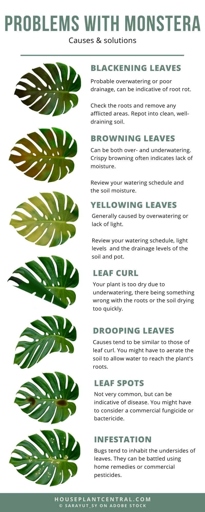
With a little care, your Monstera will be back to its lush, green self in no time.
Edema
It can occur in any part of the body, but is most common in the legs and feet. Edema can be caused by a variety of factors, including pregnancy, medications, and certain medical conditions. Edema is a condition caused by excess fluid in the tissues.

Treatment for edema typically involves lifestyle changes, such as wearing loose-fitting clothing and elevating your legs when you are sitting or lying down. In some cases, your doctor may also prescribe medication to help reduce the swelling. While edema is not usually a serious condition, it can be a sign of a more serious underlying problem. If you suspect you have edema, it is important to see your doctor.
Soil Wet and Monstera Wilting
There are a few signs that your plant is overwatered, including yellowing leaves, wilting, and root rot. Overwatering is a common problem with Monsteras, as they are native to tropical rainforests and require high humidity to thrive. If you think your Monstera is overwatered, the first step is to stop watering it for a few days to allow the soil to dry out. If your Monstera is wilting, it’s likely due to too much water. If you catch the problem early, your Monstera should recover quickly. If the plant is still wilting, you can try repotting it in dryer, well-draining soil.
How to Save Overwatered Monstera
If you think your Monstera is overwatered, don’t despair. There are a few things you can do to save your plant.
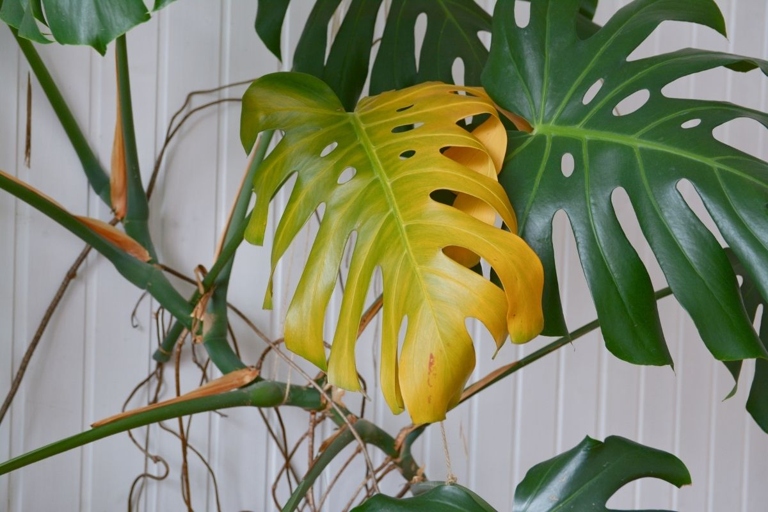
Are the stems soft or mushy? First, take a close look at your plant. Are the leaves wilted or drooping? These are all signs that your plant is overwatered.
If the leaves start to perk up, you know you’re on the right track. If you catch the problem early, you may be able to save your plant by simply letting it dry out. Move your plant to a sunny spot and stop watering it for a week or two.
You may also need to trim off any dead or dying leaves. With a little love and care, your overwatered Monstera can be saved. Repotting your plant in fresh, dry soil can help. If your plant is severely overwatered, you may need to take more drastic measures.
Correct Soggy Soil
If your Monstera’s leaves are wilting, yellowing, or browning, and the soil is constantly wet, you may be overwatering your plant. Soggy soil can lead to a number of problems for your Monstera, including root rot and fungal infections.
To correct soggy soil, start by allowing the top inch or two of soil to dry out before watering again. You can also improve drainage by adding perlite or sand to the potting mix. If your plant is still showing signs of stress, you may need to repot it into a well-draining potting mix.
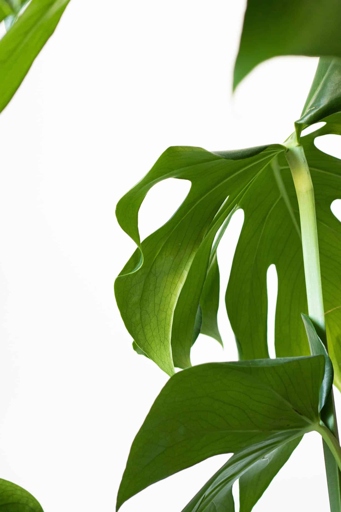
With a little care, you can get your Monstera back on track and enjoying healthy growth.
Saving Monstera Already Shriveled
If your Monstera is already shriveled, it’s not too late to save it! Here are some signs that your plant is overwatered and what you can do to help it recover:
If it’s soggy or wet, it’s likely that your plant is overwatered. Check the soil. 1.
Look for yellow or brown leaves. These are signs of water stress and indicate that your plant is not getting enough oxygen. 2.
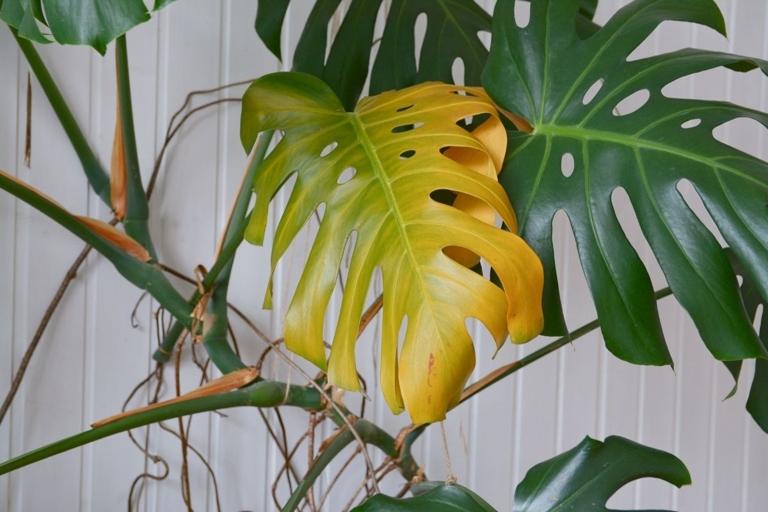
If they’re limp or wilted, it’s another sign that your Monstera is overwatered. 3. Feel the leaves.
To save your plant, start by allowing the soil to dry out completely. If the leaves are still yellow or brown, you can try removing them to allow the plant to focus its energy on new growth. With a little patience and care, your Monstera will soon be back to its healthy self! Then, water it deeply but less frequently, making sure that the water can drain freely.
Root Rot Treatment
If you think your plant has root rot, the first step is to check the roots. Treatment options include replanting in fresh, sterile potting mix and making sure the plant doesn’t stay wet for too long. If the roots are only slightly damaged, you can try to save the plant by trimming away the affected roots and repotting in fresh potting mix. If they’re mushy or black, it’s likely that your plant has root rot.
Fungal Infection Treatment
Monsteras are especially susceptible to fungal infections due to their large leaves and dense canopy. Fungal infections are a common problem for indoor plants, especially those that are overwatered.
This will help to remove any chlorine or other chemicals that may be present in tap water that could exacerbate the infection. There are several ways to treat a fungal infection on a Monstera. The next step is to water the plant only with distilled or filtered water. The first step is to identify the infection and isolate the plant from other healthy plants.
There are many fungicides available on the market, so be sure to choose one that is specifically labeled for use on Monsteras. Once the plant is isolated and being watered with distilled or filtered water, the next step is to treat the plant with a fungicide. Be sure to follow the instructions on the fungicide label carefully.
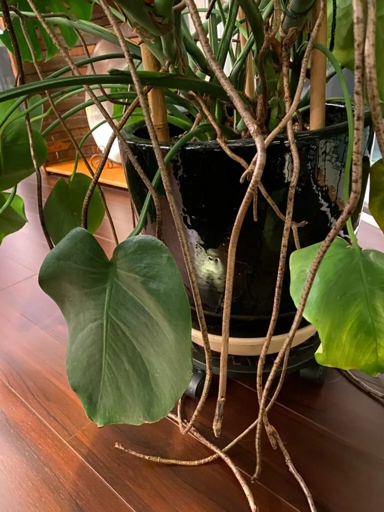
After treating the plant with a fungicide, it is important to monitor it closely for any signs of new infections. If the plant does develop another infection, it may need to be treated with a stronger fungicide or even be destroyed.
How to Water Monstera?
If they are mushy or black, it’s a sign of too much water. If they are wilted, yellow, or brown, it’s a sign of overwatering. First, check the soil. If it is soggy or wet, it’s time to let it dry out. If your Monstera is overwatered, there are a few things you can do to save it. Third, check the roots. Second, check the leaves.
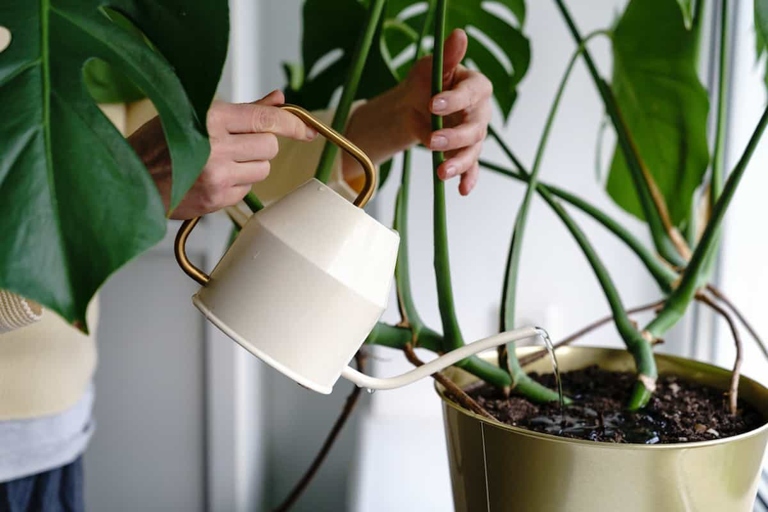
To water your Monstera, wait until the soil is dry. Do not water it again until the soil is dry. If you think your Monstera is overwatered, follow these steps to save it. Then, water it thoroughly, making sure the water drains out of the pot.
Watering Rules
If you’re new to monstera care, you might be wondering how often you should water your plant. The answer depends on a few factors, including the size of your plant, the pot it’s in, the type of soil you’re using, and the climate you live in.
Here are a few general watering rules to keep in mind:
– Water your monstera when the top inch or two of soil is dry.
– Stick your finger into the soil to check before watering.
– Water deeply, until water runs out of the drainage holes at the bottom of the pot.
– Let the soil dry out completely between waterings.
If you’re unsure whether your plant needs water, it’s better to err on the side of too little water than too much. Overwatering is one of the most common problems people have with their monsteras, so it’s important to be careful.
There are a few things you can do to save your plant. If you think you might have overwatered your monstera, don’t worry!
– First, stop watering your plant for a week or two and let the soil dry out completely.
– If the leaves are wilted and droopy, you can try giving the plant a light misting with water to help revive it.
– Once the soil is dry, start watering your plant again, following the guidelines above.
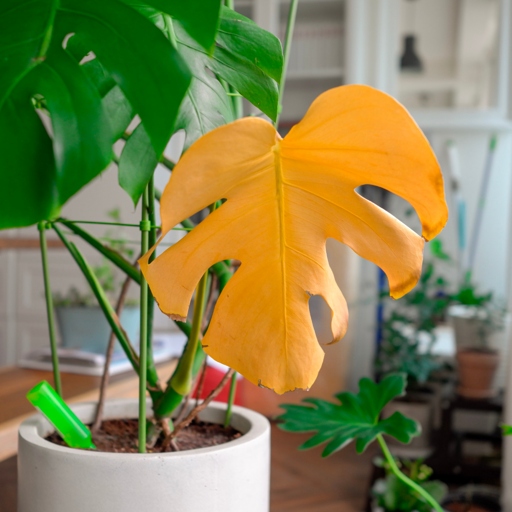
With a little care, your monstera will be back to its happy, healthy self in no time!
Watering Frequency
But did you know that different plants have different watering needs? Overwatering is one of the most common problems people have with their plants, and it can be fatal. If you’re like most people, you probably water your plants on a set schedule.
First, check the soil. If it’s still moist, wait a few more days. If you’re not sure how often to water your plants, there are a few things you can do to figure it out. If it’s dry to the touch, it’s time to water.
Another way to tell if your plant needs water is to look at the leaves. If they’re drooping or wilting, that’s a sign that the plant is thirsty.

If you think you’re overwatering your plants, there are a few things you can do to fix the problem. Second, let the soil dry out completely between waterings. First, cut back on the amount of water you’re giving them. And third, make sure you’re using a well-draining pot.
Overwatering is a common problem, but it’s easy to fix if you catch it early. By paying attention to your plants, you can make sure they stay healthy and happy.
Factors Influence Watering Frequency
The type of pot you’re using will also affect how often you need to water, as a porous pot will dry out more quickly than a non-porous one. The size of your plant will play a role, as a larger plant will need more water than a smaller one. There are a few key factors that will influence how often you need to water your Monstera. If you live in a hot, dry climate, you’ll need to water more often than if you live in a cooler, more humid climate. Finally, the climate you’re growing your plant in will also influence watering frequency.
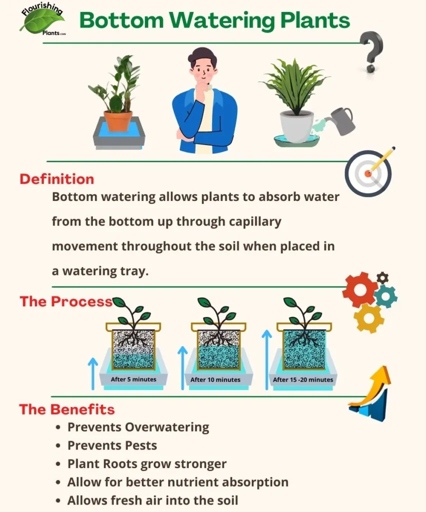
With a little care, you can keep your Monstera healthy and happy for years to come. If you start to see signs of overwatering, like yellowing leaves or root rot, be sure to cut back on watering and give your plant a chance to dry out. By keeping an eye on these key factors, you can ensure that your Monstera is getting the right amount of water and not being overwatered.
Type of Soil
There are three main types of soil–sand, clay, and loam. Each type of soil has its own pros and cons, so it’s important to know which type of soil you have before you start gardening.

If you have sandy soil, it’s easy to overwater your plants. To avoid overwatering, water your plants deeply and less often. The water will just run right through the sand and out of the pot.
This can be good or bad, depending on the plant. Clay soil is the opposite of sandy soil–it’s very dense and holds onto water. Other plants, like ferns, need a lot of water and will wilt if they’re not getting enough. Some plants, like succulents, need very little water and will actually rot if they’re overwatered.
Loam is the perfect type of soil for most plants. It’s a mix of sand and clay, so it has the benefits of both. Loam retains water, but it also drains well, so you won’t have to worry about overwatering.
Sunlight
The edges of the leaves will also start to turn brown and crisp. If your Monstera is getting too much sun, you’ll notice the leaves start to turn yellow and brown. If you see these signs, it’s time to move your plant to a shadier spot.
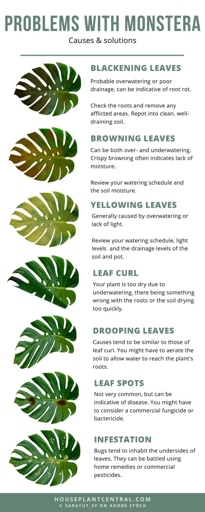
Too much sun can also cause the leaves to become dry and brittle. If you see these signs, you should move your plant to a shadier spot and make sure to water it more frequently.
If you think your plant is getting too much sun, the best solution is to move it to a shadier spot. You can also try to increase the humidity around your plant by misting it with water or placing it on a pebble tray.
Humidity
And if you’re like me, you probably felt really guilty about it. One of the most important things I’ve learned is that humidity is key. If you’re like me, you’ve probably killed a plant or two in your lifetime. I’ve killed my fair share of plants, but I’ve also learned a lot about how to keep them alive.
If the air is too saturated with water vapor, it can cause problems like leaf drop, root rot, and fungal diseases. Too much humidity can be just as bad as too little, though. It’s important for plants because it helps them absorb water and nutrients. Humidity is the amount of water vapor in the air.
If the leaves of your plant are drooping, that’s a sign that it’s not getting enough humidity. So how do you know if your plant is getting too much or too little humidity? There are a few signs to look for. If you see any mold or mildew on the leaves, that’s another sign of too much humidity. If the leaves are yellowing or browning, that’s a sign of too much humidity.
If the air is too humid, you can try moving the pot to a drier location or using a dehumidifier. If your plant is showing signs of too much or too little humidity, there are a few things you can do to fix the problem. If the air is too dry, you can try misting the leaves with water or placing the pot on a tray of pebbles and water.
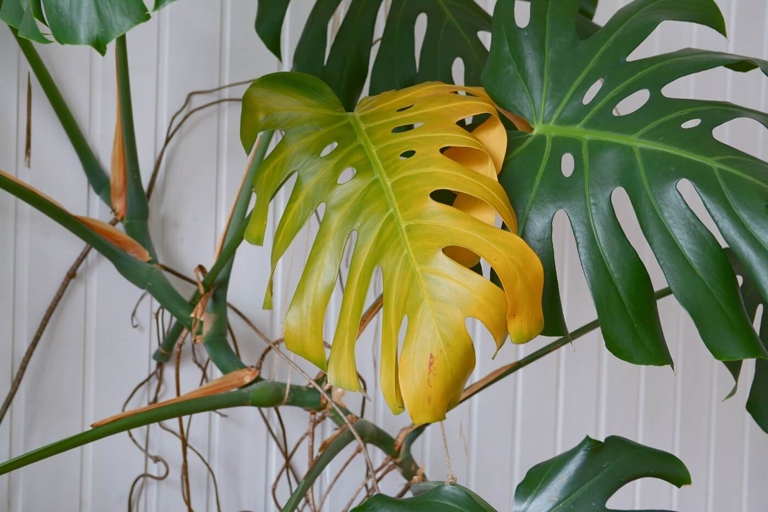
By paying attention to the humidity levels in your home, you can keep your plants healthy and happy.
Stage of Growth
If the leaves are brown and crispy, it’s probably too late to save your plant. If the leaves are wilted and yellow, it’s likely that your plant is overwatered. First, take a close look at your plant. There are several things you can do to save your plant. If you have an overwatered Monstera, don’t despair!
If your plant is still alive, there are a few things you can do to save it. Be sure to water your plant only when the soil is dry to the touch. First, remove the plant from the pot and allow the roots to dry out. Then, replant the plant in fresh, well-draining potting mix.
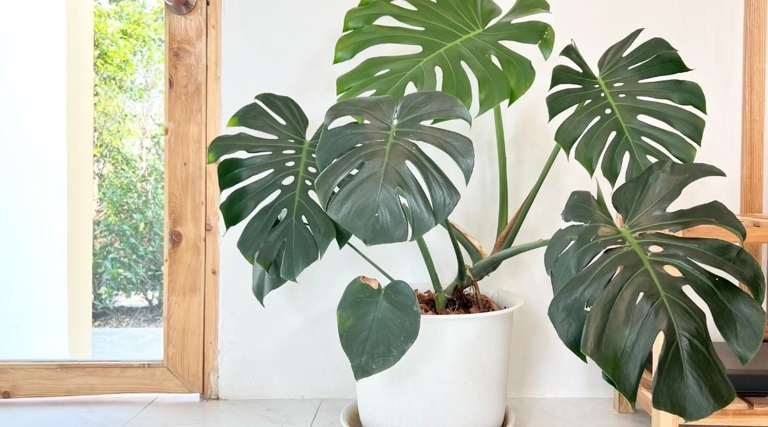
With a little love and care, your overwatered Monstera will be back to its old self in no time!
Season of the Year
But, there’s one plant that’s not doing so well. In fact, it’s suffering from a case of overwatering. The sun is shining and the flowers are blooming. It’s the season of the year when the weather is warm and the days are long.
But, when they’re overwatered, they can start to show some serious signs of stress. The plant in question is a monstera, and if you’re familiar with them, you know that they’re typically pretty tough plants.
If it’s soggy or waterlogged, that’s a sure sign that the plant is getting too much water. If you think your monstera is overwatered, the first thing you should do is check the soil.

The first step is to stop watering the plant for a while and let the soil dry out. This will give the plant a chance to recover and start to grow again. Once you’ve confirmed that the plant is overwatered, it’s time to take action.
They can help you figure out the best way to care for your plant and keep it healthy. If you’re not sure how to care for your monstera, or if you’re worried about overwatering it, be sure to consult with a professional.
Pot Size
Monsteras are native to tropical rainforests, so they’re used to getting a lot of water. But too much water can cause the roots to rot, which will eventually kill the plant. If you notice your Monstera’s leaves are drooping and wilting, it’s likely that it’s been overwatered.

If the soil is dry, it’s time to water your Monstera. To check if your Monstera is overwatered, stick your finger into the soil. If it feels soggy, it’s time to let the plant dry out.
This will help to flush out any salt buildup that can occur from using tap water. The best way to water a Monstera is to let the water run through the soil until it drains out the bottom of the pot.
Improper Soil Mix
However, too much water can actually drown the plant and cause the roots to rot. This is a common problem because people often think that more water is better. If you notice that your Monstera is wilting, yellowing, or drooping, it is likely that you are overwatering it.

Once you have replanted, be sure to water only when the soil is dry to the touch. You can also try to improve the drainage of your current pot by adding some rocks or gravel to the bottom. To fix this problem, you will need to replant your Monstera in a pot with well-draining soil.
Water Quality
If you notice your Monstera’s leaves are yellowing, drooping, and wilting, it’s likely that you are overwatering your plant. Overwatered plants are a common problem for plant parents, but there are a few easy steps you can take to fix the issue.
Make sure there is a hole in the bottom of the pot and that it is not blocked. First, check the drainage of your pot. If water is not draining properly, it will sit in the pot and drown the roots.
Next, take a look at your watering schedule. Are you watering every day? Watering once a week is usually sufficient, but every plant is different. If it is, give your Monstera a good drink. Check the soil before watering to see if it is dry. If not, wait another day or two.
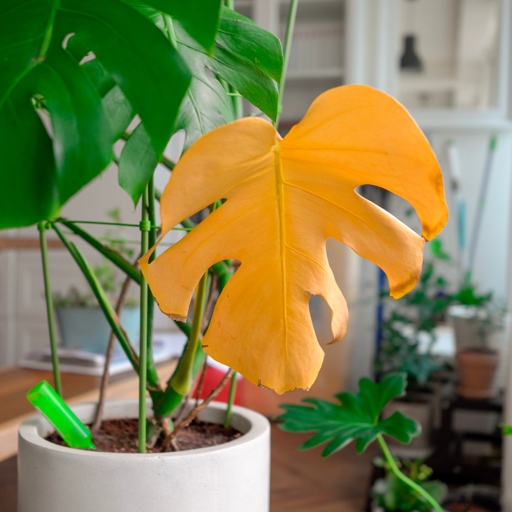
Monsteras like humid environments, so if your home is on the dry side, you may need to water more often. If you think your plant is getting too much or too little water, there are a few easy ways to adjust. Finally, consider the humidity of your home.
If you think you are overwatering your Monstera, follow these steps and you should see an improvement in your plant’s health in no time.
How Much and When to Water Monstera?
Watering your Monstera is one of the most important aspects of plant care. But how much water does your Monstera need, and when is the best time to water it?
Be sure to check the soil before watering, as overwatering is one of the most common problems with Monsteras. Your Monstera needs about 1-2 inches of water per week. Water your Monstera in the morning so that the leaves have time to dry before nightfall.
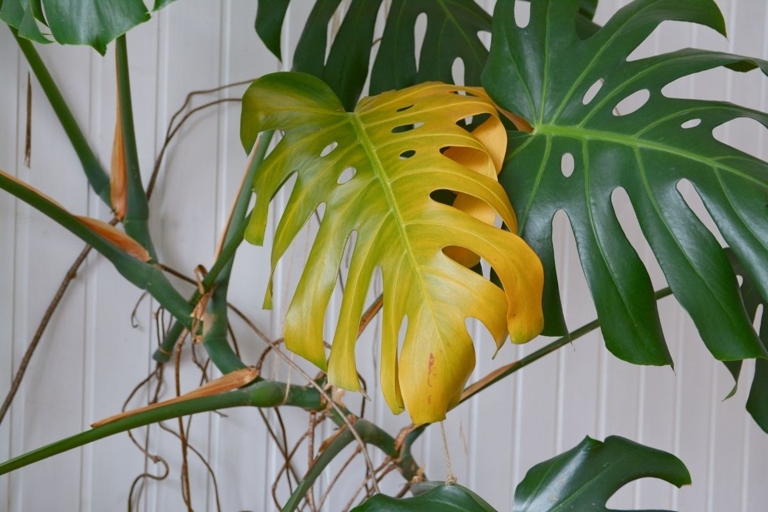
If you think your Monstera is overwatered, the first step is to stop watering it for a few days. Let the soil dry out completely before watering again. If the leaves are still wilted and yellow after a few days, you may need to repot your Monstera in dryer soil.
When to Water After Transplanting Monstera?
If you’re using a fast-draining potting mix, you can water your Monstera more frequently. However, if you’re using a potting mix that retains moisture, you’ll need to water your Monstera less often. When to water your Monstera after transplanting will depend on the size of the pot your Monstera is in and the type of potting mix you’re using.
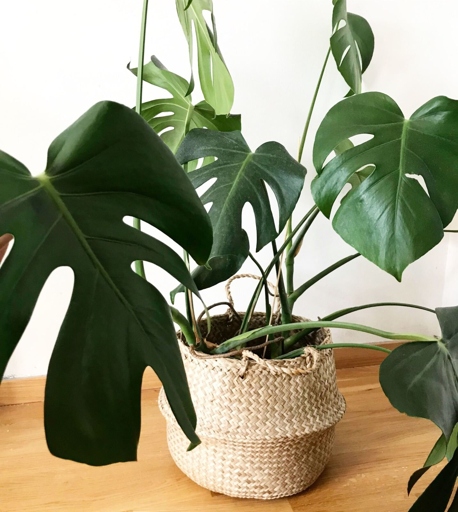
If the potting mix is moist, wait a few days before watering your Monstera. To determine when to water your Monstera, stick your finger into the potting mix. If the potting mix is dry, it’s time to water your Monstera.
Overwatering your Monstera can lead to root rot, so it’s important to only water your Monstera when the potting mix is dry. If you’re unsure whether or not your Monstera needs water, it’s better to err on the side of caution and wait a few extra days before watering.
Common Mistakes in Watering Monstera
Monsteras are native to the tropical rainforest and do not like to be waterlogged. If your Monstera is wilting, yellowing, or drooping, it’s likely overwatered. Overwatering is the number one cause of death for Monsteras.
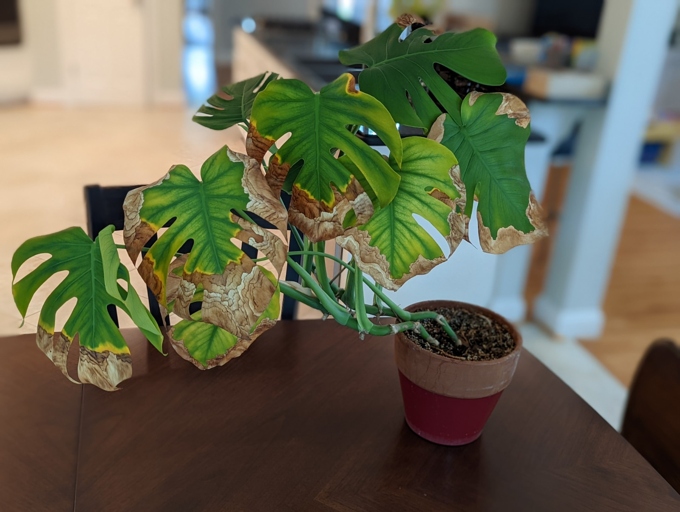
To avoid overwatering, water your Monstera only when the top inch of soil is dry. Stick your finger in the soil to check. Water Monsteras with room temperature water, not cold water from the tap. If it’s still wet, wait a few more days.
Water only when the top inch of soil is dry. There are steps you can take to save it. First, stop watering your plant. Allow the soil to dry out completely. Then, repot your plant in fresh, well-draining potting mix. If your Monstera is already overwatered, don’t despair.
Inconsistent Watering
If you’ve ever overwatered your Monstera, you know it’s not a pretty sight. The leaves start to yellow and droop, and the plant can even start to rot. It’s important to catch overwatering early on, as it can quickly lead to the death of your plant.
So, how can you tell if you’re overwatering your Monstera? There are a few key signs to look for:
If you notice the leaves of your plant starting to yellow or droop, it’s a good indication that it’s getting too much water. 1. Yellowing or Drooping Leaves: This is usually the first sign that something is wrong.
This is when the roots of the plant start to break down and decay. Root Rot: Another telltale sign of overwatering is root rot. If you notice your plant’s roots looking black or mushy, it’s a good sign that it’s overwatered. 2.

Stagnant water can lead to all sorts of problems for your plant, so it’s important to empty it out and start fresh if you see this happening. 3. Stagnant Water: If you notice that the water in your plant’s pot is starting to stagnate, it’s a sure sign that you’re overwatering.
If you think you might be overwatering your Monstera, there are a few things you can do to fix the problem.
This will give the plant a chance to dry out and recover. And if you’re watering every other day, cut back to once a week. 1. Cut Back on Watering: The first step is to cut back on watering. If you’re used to watering your plant every day, cut back to every other day.
Repot in Well-Draining Soil: If your plant is in a pot with poor drainage, that could be part of the problem. Repotting in a well-draining potting mix will help to prevent overwatering in the future. 2.
3. This will give the plant a chance to recover. Let the Plant Dry Out: If your plant is already overwatered, the best thing you can do is to let it dry out. Stop watering it and allow the soil to completely dry out.
Overwatering is a common problem with Monsteras, but it’s one that’s easily fixed. By being aware of the signs of overwatering and taking steps to correct the problem, you can keep your plant healthy and happy.
Watering too Much
If you’re overwatering your Monstera, you’ll notice a few key signs. The leaves will start to yellow and fall off, the stem will become mushy, and the roots will start to rot. To save your plant, you’ll need to take immediate action to correct the watering schedule.
If you’re watering your Monstera too much, the first thing you’ll notice is that the leaves start to yellow and fall off. The stem will also become mushy, and the roots will start to rot. To save your plant, you’ll need to take immediate action to correct the watering schedule.
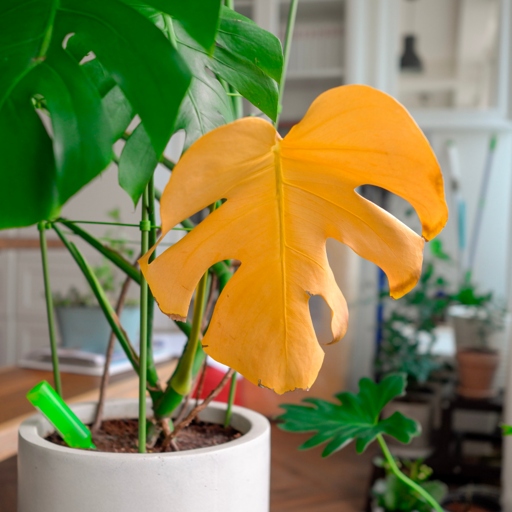
With a little time and care, your Monstera will soon be back to its healthy self. Overwatering is a serious problem that can quickly kill your plant. Allow the soil to dry out completely between waterings, and be sure to empty any water that collects in the saucer beneath the pot. To correct the watering schedule, start by watering your plant less frequently. If you notice any of these signs, it’s important to take action right away.
Wet Soil from Overwatering
If you’ve ever overwatered your Monstera, you know that it can be a big problem. The leaves can start to yellow and drop off, and the plant can start to look overall unhealthy. But don’t worry, there are steps you can take to save your plant.
First, stop watering your plant for a few days and let the soil dry out. Then, start watering again, but be sure to water less frequently. You may also need to repot your plant into fresh, dry soil.
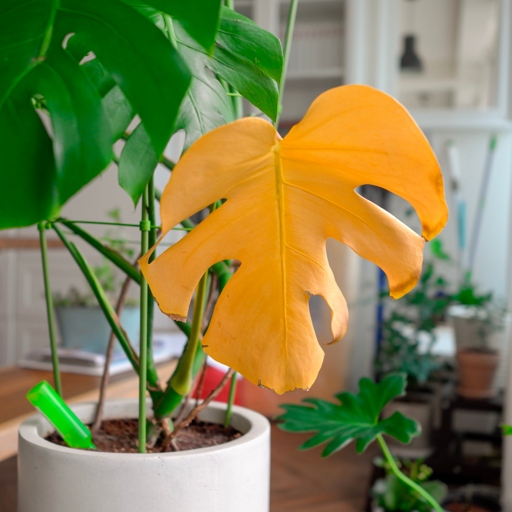
If you follow these steps, your plant should start to recover. Just be sure to not overwater it again in the future!
Watering the Leaves and Not the Roots
If you’re like most people, you probably water your plants by giving them a good soaking at the roots. But did you know that you should actually be watering the leaves?
Plus, it helps to keep the leaves healthy and free from pests and diseases. Watering the leaves helps to prevent your plant from getting too dry and stressed out. It’s true!
Here’s how to do it:
Fill a watering can with lukewarm water. 1.
Gently pour the water over the leaves, being careful not to wet the roots. 2.
3. Allow the water to drain off the leaves and into the soil.

Repeat every few days, or as needed. 4.
So next time you water your plants, be sure to give the leaves a good drink, too!
Watering During the Heat of the Day
However, watering during the heat of the day can actually do more harm than good. When it’s hot outside, it’s tempting to water your plants more often to keep them from wilting. Water early in the morning or late in the evening, when it’s cooler and the water will have time to soak in. The water will evaporate before it has a chance to reach the roots, and the leaves will be more likely to burn.
How often should I water my Monstera?
If you’re unsure, it’s always better to err on the side of too little water rather than too much. When it comes to watering your Monstera, the general rule of thumb is to water when the top inch of soil is dry. However, there are a few factors that can affect how often you need to water, such as the size of your pot, the type of potting mix, the temperature, and the humidity.

Once the soil is dry, you can start watering again, but be sure to water less frequently. If you’re still seeing signs of overwatering (yellowing leaves, wilting, etc. ), you may need to repot your plant into a pot with better drainage. If you think your Monstera is overwatered, the first step is to stop watering it until the soil has a chance to dry out.
How do I know if my Monstera needs water?
If it’s soggy or feels wet, it’s probably time to water your Monstera less. If the leaves are wilting or drooping, that’s another sign that the plant needs less water. First, check the leaves for brown or yellow spots. If you think your Monstera may be overwatered, there are a few signs to look for. Finally, check the soil.
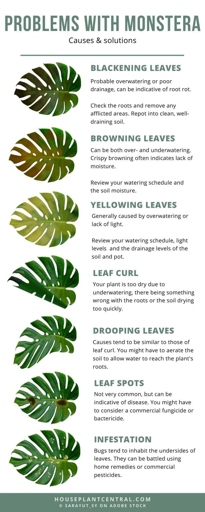
Overwatering is one of the most common problems with indoor plants, so it’s better to underwater than to overwater. If you’re not sure whether your Monstera needs water, it’s always better to err on the side of caution and wait a few days.
Can you bottom water Monstera?
Unfortunately, bottom watering your Monstera can actually lead to problems for your plant. If you’re like most people, you probably think that bottom watering your Monstera is the best way to water your plant. After all, it’s how you water most other plants, so why not your Monstera?

This can lead to a whole host of problems for your plant, including leaf drop, yellowing leaves, and stunted growth. Here’s why: when you bottom water your Monstera, the water can pool in the bottom of the pot and start to rot the roots.
This will help to prevent root rot and keep your plant healthy. Water your plant until the water runs out of the drainage holes, and then let the soil dry out completely before watering again. If you’re bottom watering your Monstera and you start to see any of these problems, the best solution is to stop bottom watering and start watering from the top.
Frequently Asked Questions
1.What are the signs of overwatering a Monstera?
2.What is the step by step solution to overwatering a Monstera?
3.How often should I water my Monstera?
4.What happens if I overwater my Monstera?
5.Can I save my overwatered Monstera?
1.What are the signs of overwatering a Monstera?
The signs of overwatering a Monstera are yellowing leaves, wilting, and leaf drop. The plant may also have root rot, which will cause the roots to turn black and mushy.
2.What is the step by step solution to overwatering a Monstera?
The first step is to stop watering the plant. Allow the soil to dry out completely before watering again. The next step is to repot the plant in fresh, well-draining potting mix. Be sure to water the plant only when the soil is dry.
3.How often should I water my Monstera?
Water your Monstera only when the soil is dry. Depending on the size of the pot and the plant, this may be every 1-2 weeks.
4.What happens if I overwater my Monstera?
If you overwater your Monstera, the leaves will yellow, wilt, and drop. The plant may also develop root rot, which will cause the roots to turn black and mushy.
5.Can I save my overwatered Monstera?
If you catch the problem early, you may be able to save your plant by repotting it in fresh, well-draining potting mix and stopping watering until the soil is dry.
Final thoughts
If you have an overwatered Monstera, don’t despair. There are some easy signs to look for and some simple solutions. With a little bit of care, your plant will be back to its old self in no time.
